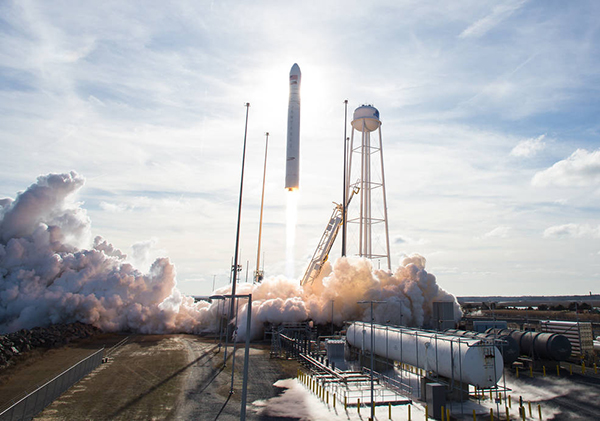Northrop Grumman Set for Next Cargo Launch to Space Station From NASA’s Wallops Flight Facility
By Space Coast Daily // February 20, 2021
Launch targeted for 12:36 p.m. EST
ABOVE VIDEO: Northrop Grumman Cargo Launch to the Space Station from NASA Wallops.
(NASA) – NASA commercial cargo provider Northrop Grumman is targeting 12:36 p.m. EST Saturday, Feb. 20, for the launch of its 15th resupply mission to the International Space Station.
Live coverage of the launch from NASA’s Wallops Flight Facility on Wallops Island, Virginia, will air on NASA Television, the agency’s website and the NASA app beginning at 12 p.m. EST Saturday, Feb. 20, with a prelaunch event Friday, Feb. 19.
Loaded with approximately 8,000 pounds of research, crew supplies, and hardware, Northrop Grumman’s Cygnus cargo spacecraft will launch on the company’s Antares rocket from Virginia Space’s Mid-Atlantic Regional Spaceport.

The Cygnus spacecraft, dubbed the SS Katherine Johnson, will arrive at the space station Monday, Feb. 22. About 4:40 a.m., Expedition 64 Japan Aerospace Exploration Agency astronaut Soichi Noguchi will capture Cygnus, with NASA astronaut Michael Hopkins acting as a backup. After Cygnus capture, mission control in Houston will send ground commands for the station’s arm to rotate and install it on the station’s Unity module Earth-facing port.
Highlights of space station research facilitated by this Cygnus mission are:
– Spaceborne Computer-2, a high-performance commercial off-the-shelf computer system being studied to increase data processing speeds for science aboard the space station
– LambdaVision’s, second experiment headed to the space station to study the advantages of manufacturing artificial retinas in space
– Micro-16, an investigation studying muscle strength changes in worms to help us better understand muscle weakening that astronauts can experience in microgravity
– The Real-Time Protein Crystal Growth-2 experiment, which will demonstrate new methods for producing high-quality protein crystals in microgravity
– A-HoSS, a radiation detection system developed for the Orion spacecraft and certified for use on NASA’s Artemis II mission, the first mission on which a crew of astronauts will orbit the Moon in the spacecraft
– Exploration ECLSS: Brine Processor System, a demonstration in regenerative life support technology that will help provide more clean air and water to the space station crew.












